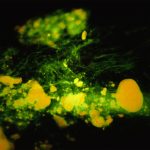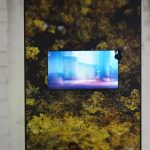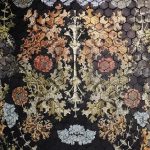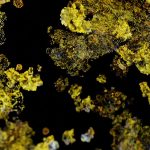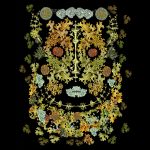
One and the Care of Many
New work in Rewild,
MAXXI Rome, curated by Manuel Cirauqui.
Part of S+T+ARTS Repairing the Present commissions
(Above: Video still from Flourish)
One and the Care of Many addresses lichen as a starting point to consider notions of collaboration and care between species. Lichens are a multispecies population; mycelial and algae partners living together in a flourishing and site-specific complexity of architecture and community; like a city. Occupying six percent of the earth and calculably metabolising two gigatonnes per year of atmospheric carbon globally, lichens are both ancient and current. At once micro-terraformers, atmospheric bioindicators, ecosystem cornerstones and discrete non-human storytellers of that blink-of-an-eye millennium in which humans have apexed across the earth.
Above: Windows through which the universe shines
Single screen video of immersive projection + sound environment. 2022
Sourced from a real-time visualisation of voxel dataset from the microCT scan of a small hooded rosette lichen (Physcia adscendens), from a cannal wall in Den Haag. A micro-macro immersive navigation through a 1 cm piece of lichen; a galaxy and a pinhead.
Made with the assistance of the Media Solution Center HLRS
Below: Flourish 2022
Digital video with digital print on wallpaper 2022
A speculative storytelling from the perspective of an algae that forms part of lichen. A view of microrewilding, a microbially led flourishing of nature in the city, at lichen time, where 10 years unfolds in 3 minutes.
a S+T+ARTS project, with partners In4Art, Witteveen +Bos
For research background: HERE
Digital / CG Design and world building: Charleton Mercelina. Video: Penelope Cain Editing: Penelope Cain+VideoHippies. Featuring sounds by Felicity Mangan. 3D printing: Formlab, School of Arts, Ghent. Without these creatives this would not have been possible.
With the assistance of: Media Solution Center-HLRS High Performance Computing Center Stuttgart, Witteveen + Bos, The Hague; Faculteit Civiele Techniek en Geowetenschappen, TU Delft, Bryologische en Lichenologische Werkgroup (BLWG).

